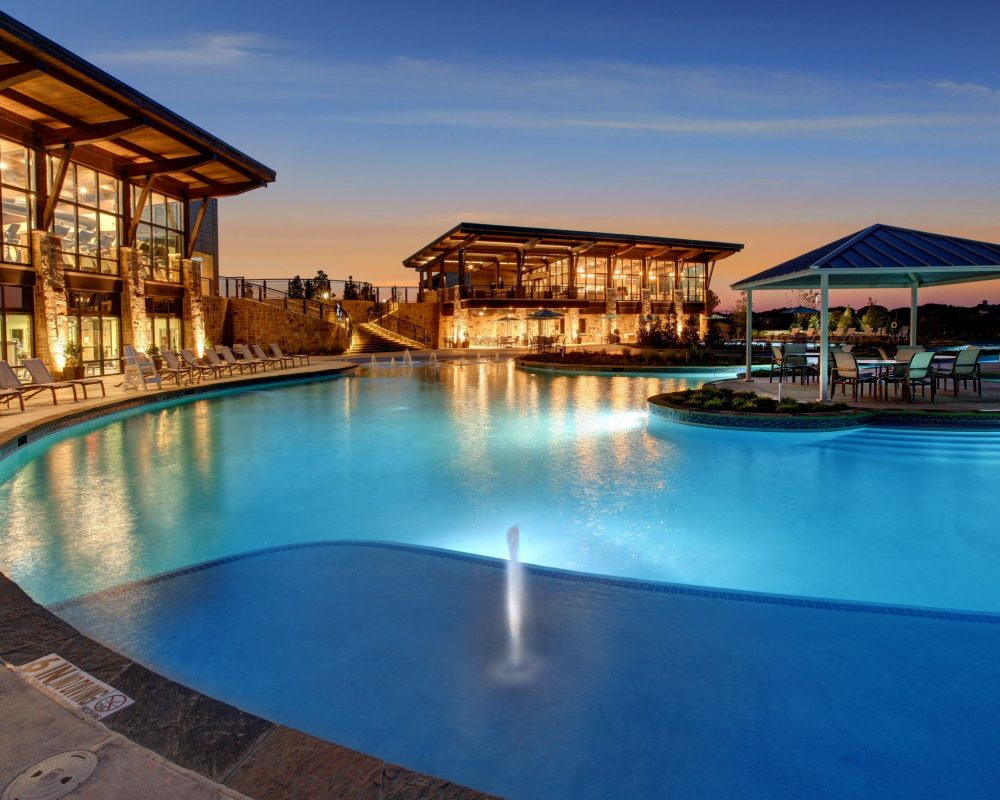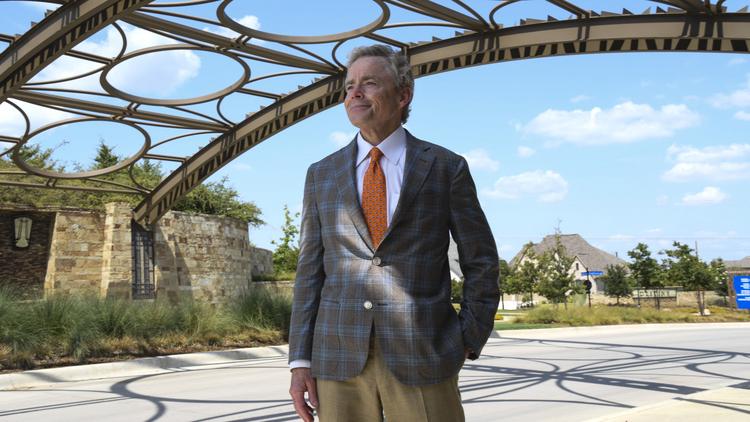Driving down Inspiration Boulevard in one of Huffines Communities’ newest developments, there’s a village called “Destiny” on the right, and another named “Hope” on the left. Keep going past George W. Bush Elementary School, and you’ll see Faith, Harmony, Discovery and other villages with similarly uplifting names.
“The goal is to inspire the residents every day with a sense of energy and enthusiasm about life,” Don Huffines, co-owner of Dallas-based Huffines Communities, explained as he led the Dallas Business Journal on a tour of Inspiration, a 600-acre master-planned development located in Wylie and St. Paul. Inspiration has about 700 homes now; at build-out it will have roughly 1,800 homes.
In 1985, Don Huffines and his twin brother, Phillip, started Huffines Communities, which has grown into one of the largest residential real estate development companies in the Dallas-Fort Worth area.
Huffines designs its communities to foster interaction amongst neighbors and connect people within the community. Residents live in smaller “villages” within the community, named, and easily recognized by their own entrances to create a sense of place and further facilitate neighbors knowing one another. Children in the communities form friendships as they attend on-site schools that are part of local independent school districts.
Inspiration is one of Huffines Communities’ most expensive developments, with homes priced in the $280,000s through about $700,000.
The company in July broke ground on its latest community, Aspen Meadows, north of Highway 380 near Providence, Texas. With pricing in the low $200,000s through the $300,000s, Huffines is positioning and marketing Aspen Meadows for first-time homebuyers.
There, Huffines is preparing 312 lots for homebuilders including Lennar, Gehan Homes and Impression Homes, and model homes will be available in the spring of 2020. Aspen Meadows is a relatively small project for Huffines, whose focus over the last two decades has increasingly shifted to large, masterplanned communities, with 1,500 to 5,000 houses.
North Texas was the hottest home construction market in the country in 2018. Data from Dallas-based housing analyst Residential Strategies Inc. puts DFW on pace for 33,776 new home starts this year, down from about 35,040 in 2018, but still one of the nation’s most active markets.




